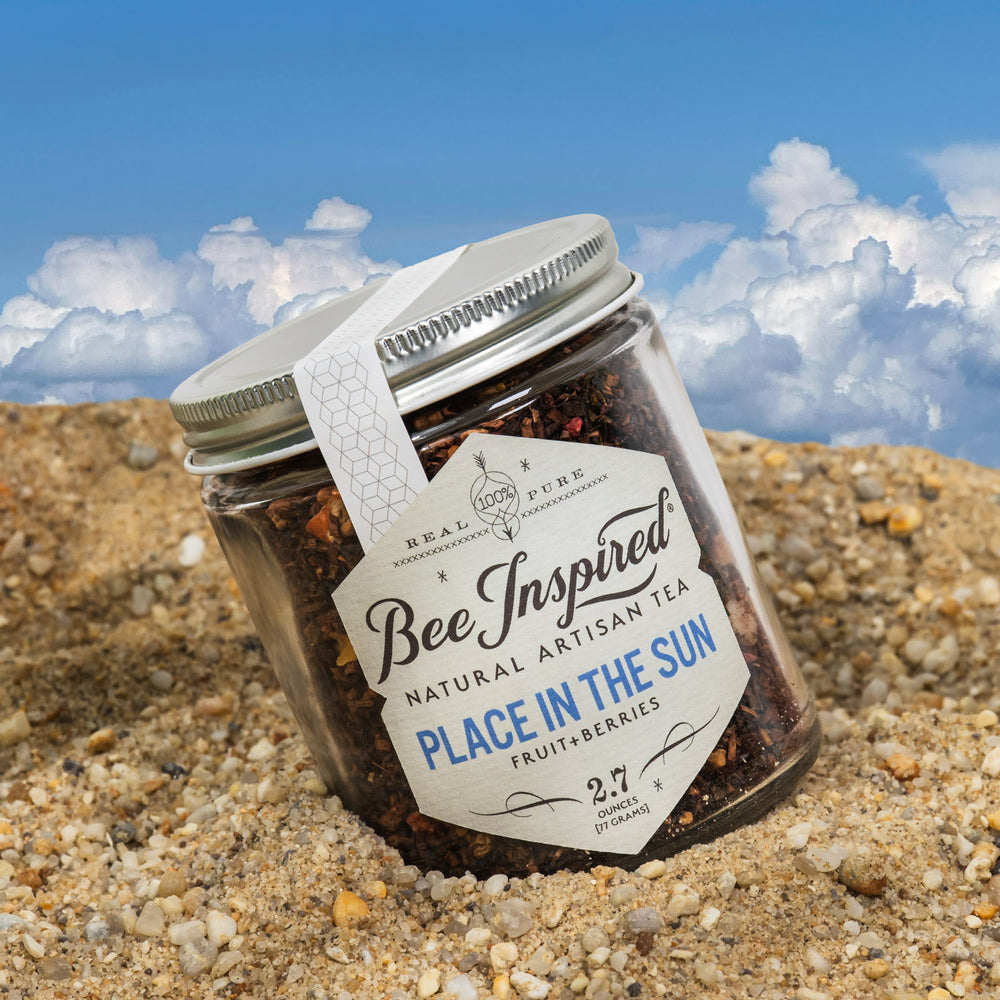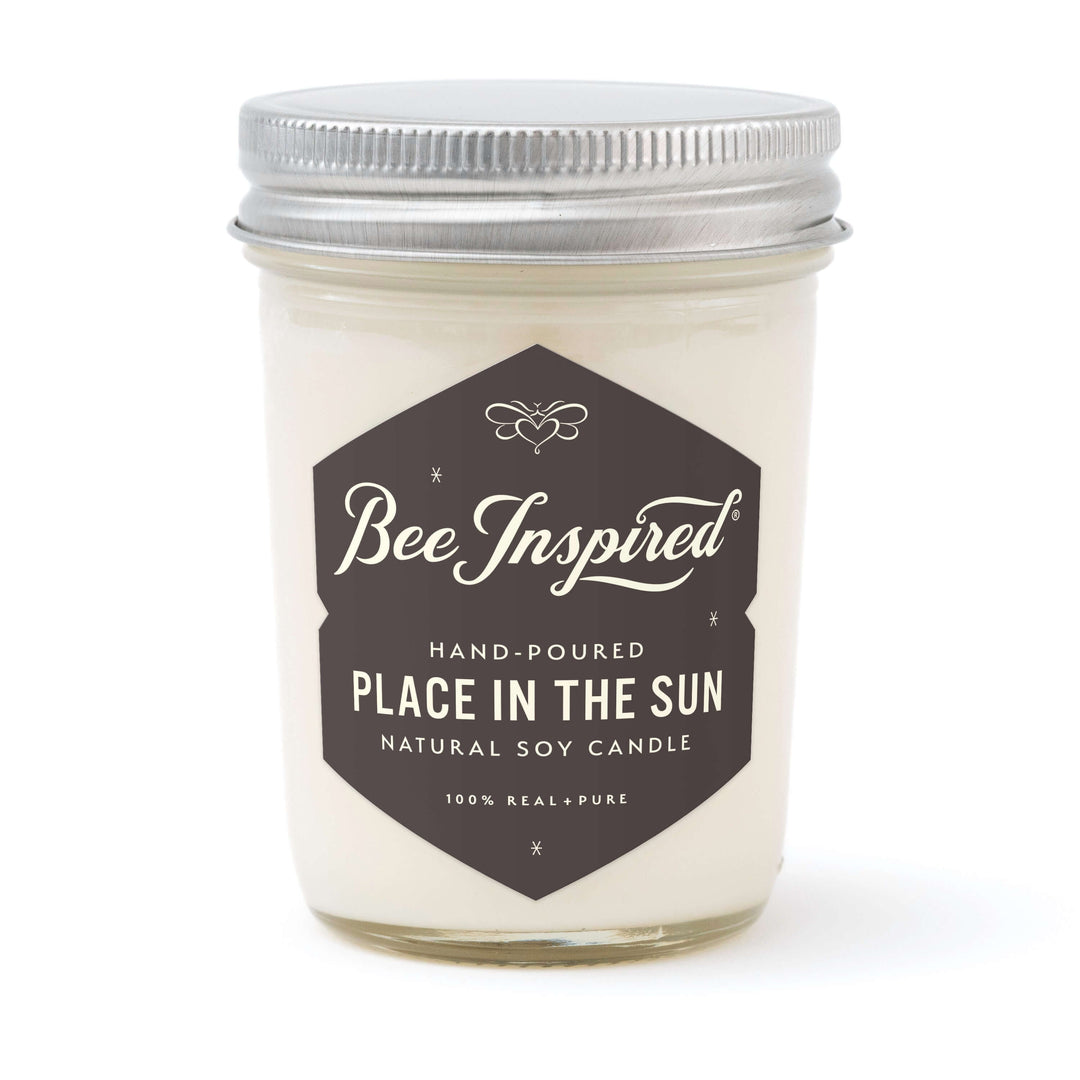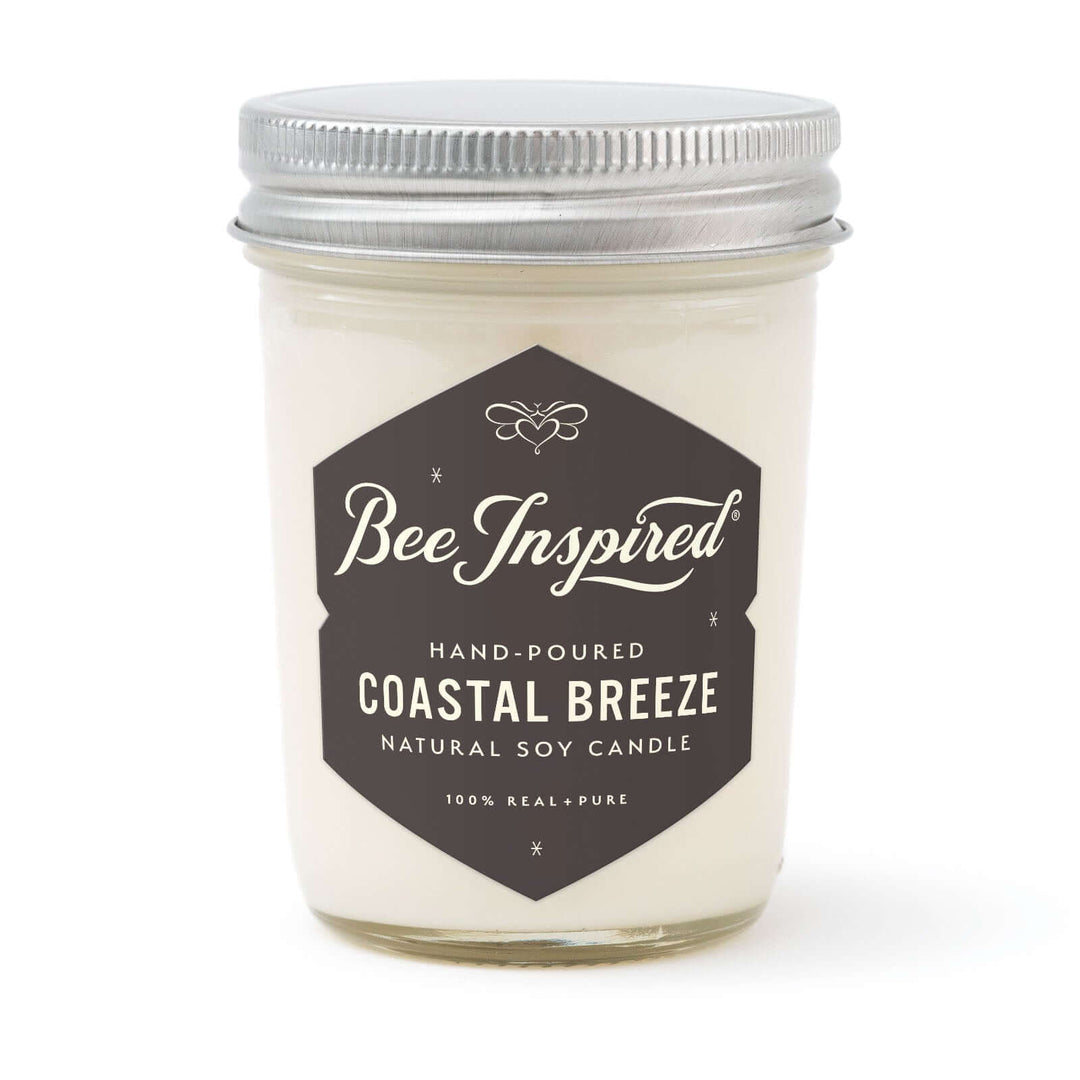October brings crisp mornings to Kent Island, and when temperatures drop to 40 degrees before sunrise, every beekeeper knows it's time for winter preparation. Winterizing bees isn't just about hoping your colonies survive - it's about giving them every advantage to thrive through Maryland's unpredictable winter weather.
Whether you're a first-year beekeeper or managing an established apiary, understanding how to winterize beehives can mean the difference between spring colonies that bounce back strong and devastating winter losses. Maryland's variable climate, where winters can swing between mild and harsh depending on wind direction and weather patterns, requires beekeepers to prepare for any scenario.
Understanding Winter Bee Biology
Before diving into winterizing tasks, it's helpful to understand what happens inside the hive during cold months. Honey bees don't hibernate - instead, they form a winter cluster when temperatures drop below 50°F, staying active by generating heat through wing muscle vibrations.
The colony's survival depends on "winter bees" or diutinus bees, which are anatomically different from summer workers. These specialized bees have enlarged fat bodies that allow them to live for months rather than weeks, storing nutrition within their bodies to feed the queen and brood when spring arrives. Beekeepers must ensure these winter bees are raised in healthy conditions during September and October, which means managing varroa mites and ensuring adequate nutrition during late summer.
Fall Beehive Inspection Checklist
Start your winter preparations with a thorough hive inspection while temperatures remain above 50°F during the day. Here's what to assess:
Colony Strength
Check that you have at least 8-10 frames covered with bees. Weak colonies with fewer than 4-5 frames of bees should be combined with stronger colonies before winter arrives. A robust population is essential - the more bees in the cluster, the more efficiently they generate and conserve heat.
Queen Health
Verify your queen is present and laying. Look for eggs, larvae, and capped brood patterns. A failing queen in October means trouble by February.
Honey Stores
Maryland colonies typically need 50-80 pounds of honey to survive winter. A full shallow super (40-50 pounds) plus stores in the deep brood box provides a good safety margin. Check honey weight by lifting the back of the hive - it should feel substantial.
Pest Management
Both varroa mites and small hive beetles can devastate winter colonies if left unchecked.
Managing Varroa Mites Before Winter
This is perhaps the most crucial update from older beekeeper advice: varroa mite management has become essential for winter survival. Unlike in 2011, we now understand that varroa mites feed on the fat bodies of winter bees, compromising exactly what these bees need to survive months of cold weather.
Treat for varroa mites in August before winter bees begin developing in September-October. A colony with heavy mite loads going into winter will have weakened winter bees with depleted fat reserves, leading to spring collapse even if honey stores seem adequate. Monitor levels and treat according to current IPM thresholds - this one step has transformed winter survival rates across the industry.
Small Hive Beetle Control for Winter
Small hive beetles remain a challenge in Maryland's climate, particularly during wet seasons. While the current blog mentions hood traps with oil and vinegar (which remain effective), modern best practices include:
Prevention Strategies
- Keep colonies strong - healthy populations can patrol and contain beetle numbers
- Remove excess empty space by taking off unfilled supers
- Use entrance reducers to help guard bees defend against intruders
- Consider screened bottom boards with oil pans beneath
- Place hives in full or partial sun, as beetles prefer shaded locations
Treatment Options
If beetle populations become problematic despite preventive measures, beetle traps placed between frames or corrugated cardboard strips on bottom boards can capture adults. The key is maintaining strong colonies that can keep beetle populations suppressed naturally.
Ground Treatment
Pouring diluted household bleach around hive bases can help prevent larvae from successfully pupating in soil, but focus first on keeping colonies strong enough to prevent heavy infestations.
Winter Feeding: Timing and Techniques
Honey is always superior to sugar syrup, but if your hives are light on stores, supplemental feeding becomes necessary. The timing and method matter significantly:
Fall Syrup Feeding (September-Early October)
Use 2:1 sugar syrup (two parts granulated sugar to one part warm water by weight). THis heavy syrup encourages bees to store it like honey. Feed in the evening to reduce robbing risk, and always use an entrace reducer at the smallest opening during feeding periods.
Complete all liquid feeding before temperatures consistently drop below 50°F. Once bees cluster, they cannot access liquid feeders effectively.

Emergency Winter Feeding
If colonies are dangerously light in midwinter, use:
- Fondant or candy boards placed directly above the cluster
- Dry granulated sugar on newspaper above inner corner
- Commercial winter patties designed for cold-weather feeding
Never feed liquid syrup once bees are clustering, as they cannot process it in cold weather.
Preparing the Hive Structure
Remove Queen Excluders
This critical step prevents tragedy. As bees move upward through winter to access honey stores, a queen excluder left in place will trap the queen below while workers move up, leading to queen death and colony collapse.
Entrance Management
Install an entrance reducer at the smallest opening. This serves multiple purposes:
- Helps guard bees defend against robbing
- Prevents mice from entering (they love the warmth and will destroy comb)
- Reduces cold drafts while maintaining necessary ventilation
- Allows dead bees to be pushed out while preventing blockage
Position the entrance reducer with the opening facing upward - this prevents dead bees from accumulating and blocking the entrance entirely during long cold spells.
Ventilation and Moisture Control
Once of winter's biggest threats isn't cold - it's moisture. As the cluster generates heat, water vapor rises and condenses on cold hive surfaces, potentially dripping back onto bees and causing them to chill or freeze.
Create upper ventilation by:
- Drilling 2-3 small holes (3/8 inch) in the uppermost brood box
- Using a feeding shim or notched inner cover
- Adding insulation above the inner corner to prevent condensation
Proper ventilation allows moisture-laden air to escape while maintaining critical hive warmth.
Hive Protection
- Tip hives slightly forward (place shims under back corners) so any moisture drains out the entrance
- Secure lids with bricks, rocks, or ratchet straps - winter winds can remove unsecured covers with devastating results
- Consider windbreaks if your apiary faces prevailing winds

Regional Considerations for Maryland Beekeepers
Maryland's Mid-Atlantic climate presents unique challenges. Kent Island and Eastern Shore apiaries experience maritime influence that can moderate temperatures but bring sustained wind and moisture. Western Maryland beekeepers face colder, more consistent weather conditions.
Pay attention to your local microclimate:
- Coastal beekeepers may need less insulation but more wind protection
- Inland beekeepers may benefit from wrapping hives in colder zones
- All Maryland beekeepers should prepare for temperature swings - 50°F one day, 20°F the next
Connect with local beekeeping associations for region-specific timing and techniques. What works in Garrett County may be excessive in southern Maryland.
Complete Winter Preparation Timeline
Late August-Early September
- Complete varroa mite treatments
- Begin fall feeding if needed
- Remove honey supers meant for harvest
September
- Continue monitoring food stores
- Assess colony strength and combine weak hives
- Begin beetle management if populations are high
- Check queens and verify brood patterns
October
- Install entrance reducers
- Remove queen excluders
- Complete liquid feeding
- Add upper insulation
- Secure hives with weight
- Ensure upper ventilation
November-March
- Monitor hives weekly by observation (don't open)
- Check for mouse damage at entrances
- Remove dead bees from landing boards
- Listen for cluster murmur
- Be ready to provide emergency feeding if needed
Winterizing Supplies Checklist
To prepare your beehives effectively, gather these materials:
- Entrance reducers (wood or metal)
- Mouse guards (1/4 inch hardware cloth works well)
- Bricks or straps for securing covers
- Sugar for emergency bee feeing
- Insulation material (foam board, burlap, wood shavings)
- Beetle traps if needed
- Treatment supplies for mites
- Wood shims for tipping hives
- Simple syrup ingredients (sugar, water)

Monitoring Winter Colonies
Resist the temptation to open hives once cold weather settles in. Opening hives in winter breaks propolis seals, disrupts the cluster, and exposes bees to dangerous cold. Instead, monitor externally:
- Observe flight activity on warmer days (cleansing flights)
- Listen for buzzing sounds indicating an alive cluster
- Check entrances for dead bees or debris
- Feel hive weight by lifting the back slightly
- Watch for unusual moisture or ice at entrance
If you suspect starvation (unusually light hive weight mid-winter), you can quickly add emergency feed on top without a full inspection.
Common Winter Mistakes to Avoid
Over-insulating:
Too much insulation without proper ventilation traps moisture, creating worse problems than cold alone.
Waiting too long:
Starting winter prep in November is too late in Maryland. Begin in late August.
Ignoring varroa mites:
This single oversight causes more winter colony losses than any other factor.
Opening hives in cold weather:
Unless it's an emergency, leave closed hives alone once temperatures consistently drop below 50°F.
Taking too much honey:
First-year colonies especially need every drop of honey they produced. Plan to harvest from second-year colonies that have proven winter survival.
When Winter Preparation Makes the Difference
Your efforts in fall directly impact spring outcomes. Well-prepared colonies don't just survive—they:
- Start brood rearing earlier in late winter
- Build populations faster for spring nectar flows
- Require less emergency feeding and intervention
- Provide splits or swarm prevention opportunities
- Produce surplus honey in their second season
The work you invest now in properly winterizing bees pays dividends when other beekeepers are replacing dead colonies while yours are already building strength for the season ahead.
Learning from Experience
Every winter teaches new lessons. Maryland's variable climate means no two winters are identical, and what worked perfectly one year may need adjustment the next. Keep notes on:
- When you completed each winterizing task
- Weather patterns throughout winter
- Which colonies succeeded and why
- Unexpected problems that arose
- Feed consumption rates
These records become invaluable for improving your winter preparation strategy over time.
Connecting with the Maryland Beekeeping Community
No beekeeper succeeds alone. Maryland offers numerous beekeeping associations where experienced mentors share local knowledge about winter preparation timing, regional challenges, and proven techniques. Local bee clubs also provide opportunities to purchase local queens selected for winter hardiness in our specific climate.
The journey from first-year beekeeper to confident apiarist includes learning when to follow standard advice and when to adapt for your specific situation. The fundamental principles of winter preparation—strong colonies, adequate stores, pest management, proper ventilation—remain constant, but application varies by location and experience.
Whether you're preparing your first hive for its first winter or fine-tuning strategies for a full apiary, taking time now to properly winterize beehives sets the foundation for healthy, productive colonies come spring. Maryland's bees have adapted to survive our winters for thousands of years—our job as beekeepers is simply to give managed colonies the same advantages their wild cousins would find in a hollow tree.
Your dedication to learning proper winter preparation techniques demonstrates the care that distinguishes thoughtful beekeepers. Here's to strong colonies buzzing with life when the first spring flowers bloom.












